#containment zone in vadodara
Explore tagged Tumblr posts
Text
The Ultimate Guide to Navigating Large Shopping Centers Efficiently

Table of Contents
Introduction
Why are shopping centers overwhelming
Tips for efficient navigation
Understanding the layout of large shopping malls
Where to go for the best experience
Conclusion
Introduction

Why are shopping centers overwhelming?
Big shopping centres have everything you need, including fashion and food, but due to their large size, things can get quite confusing. Without planning, you might get frustrated or lost. Therefore, the number of shops, car parks, and floors is usually so high that it becomes puzzling. It’s therefore better to be set to move effectively.
Tips for Efficient Navigation
Plan Ahead
Do your homework before you go out. Search for the shopping center online. Find mall directories. Most shopping centers, such as Taksh Galaxy Mall in Vadodara, have interactive maps online. These maps will indicate where the stores, bathrooms, and restaurants are.
Utilize a Mobile App
A few malls have mobile apps that offer real-time information. These apps can direct you to individual stores. Moreover, they usually contain information such as discounts, promotions, and events at the stores.
Start at the Information Desk
The moment you step inside a mall, go to the information desk. They will often give you maps in your hands, and employees can assist you. If you want a specific store, use the information desk as your first point of reference.
Know the Major Landmarks
Each shopping mall has landmarks. They can be fountains, escalators, or favorite stores. By knowing these landmarks, you will be able to navigate and prevent yourself from walking around in circles. In addition, it will be simpler to locate your place of origin.
Avoid Crowded Times
Try to go to the mall during the off-peak hours. Weekends and holidays are crowded. However, the working days are usually less busy in the morning and late evening. This will make your journey more comfortable and efficient.
Understanding the layout of large shopping malls
Store groupings
Large malls are usually divided into sections. For example, there may be a section that deals with clothes, and there may be another that deals with electronics. Knowing the division of shops will save you time. Search for directory boards when you enter the mall. They usually indicate store categories to you.
Levels and floors
Malls with several floors can be challenging. Look for escalators or elevators close to entrance points. Moreover, if you are going to the best shopping mall in Vadodara, get to know the various floors before you begin shopping. You can begin at the top and move downwards, or vice versa.
Food courts and rest areas
Most malls have huge food courts where you can sit and rejuvenate. If you are going to shop for hours, rest in these food courts. They tend to be in the middle or on upper floors. In addition, food courts tend to have a lot of cheap choices.
Parking areas
If you are driving, parking could be another hassle. Some shopping malls have dedicated parking spaces for certain zones. Moreover, park close to the entrance of the zone you would like to enter. Use mall apps or parking apps to view real-time parking availability.
Where to go for the best experience?
When exploring any big shopping complex, there are some spots to look for. For example, Taksh Galaxy Mall in Vadodara is a very big mall in the city. It has multiple stores, a cinema hall, and restaurants. If you’re there, begin by finding the cinema or the food court because they are usually located at the center.
If you want bigger malls, there are several options in Gujarat. You can look at the top 10 biggest mall in Gujarat to find out different shopping experiences throughout the state. Furthermore, the larger malls usually have multiple stores and entertainment venues. They are also designed with ample signage and directories so that you can easily navigate.
Conclusion
Navigating in large shopping malls should not be stressful. Pre-planning, a mobile app, and status awareness can make your shopping journey smooth and free from trouble. Whether you are in the top shopping mall in Vadodara or going through a large mall elsewhere, these tips will get you the most from your journey.
Keep in mind that the large malls are meant to be navigated. With the right help, you can be free of frustration and have a pleasant shopping experience. Happy shopping
#taksh galaxy mall in vadodara#Top 10 best mall in vadodara#best shopping mall in vadodara#best shopping mall for gaming in vadodara#best shopping centre in vadodara#Best game zone in Vadodara#Best malls for family fun in vadodara#best shopping mall for family outings in vadodara#Top-rated shopping malls in vadodara#Best restaurants in Taksh Galaxy Mall#best malls for movies and entertainment in vadodara#top 10 biggest mall in gujarat
0 notes
Text
Building Codes and Regulations for Passive Fire Protection in Industrial Construction
Learn about Passive Fire Protection (PFP) and its critical role in maintaining building safety by utilizing fire-resistant materials and design techniques. Discover the key components like fire-resistant walls, floors, and fireproofing materials that help contain and control fires.

The importance of ensuring safety in industrial construction cannot be overstated. Fire and smoke can be prevented from spreading by passive fire protection (PFP) systems, which act as silent guardians.
Building Codes and Regulations for Passive Fire Protection in Industrial Construction are essential, and VMS Consultants, a leading Project Management Consultant in Gujarat, can help ensure your project meets all safety standards.
Building safe and compliant industrial facilities requires understanding and adhering to building codes and regulations.
Manufacturing projects in India
.
What is Passive Fire Protection?
Passive fire protection refers to the use of fire-resistant building materials and design techniques to limit the spread of fire and smoke.
Unlike active fire protection systems, such as sprinklers and alarms, PFP systems are built into the structure of the building and do not require activation. Their primary function is to maintain the structural integrity of the building during a fire, allowing more time for evacuation and firefighting efforts.
Industrial infrastructure in Gujarat
.
Building Codes and Regulations
Building codes and regulations for passive fire protection are designed to ensure that industrial facilities meet minimum safety standards. These codes vary by region, but they generally cover similar aspects of fire safety.
Best factory projects in India
.
In India, the National Building Code (NBC) of India 2016 is the primary document governing fire safety in buildings. It provides comprehensive guidelines on fire prevention, life safety, and fire protection.
Here are some key aspects:
Fire Zones: The NBC categorizes buildings into different fire zones based on their occupancy and fire load. Industrial buildings fall into specific fire zones that dictate the level of fire protection required.
Fire-Resistant Construction: The code specifies the minimum fire resistance rating (FRR) for various building elements, including walls, floors, and structural members. This rating is expressed in hours, indicating how long the element can withstand fire exposure.
Escape Routes: The NBC mandates the provision of adequate escape routes, including staircases, corridors, and exits, that are protected from fire and smoke.
Fire Doors and Windows: The code requires the installation of fire doors and windows with appropriate fire resistance ratings to prevent the spread of fire and smoke between compartments.
Fireproofing of Structural Elements: The NBC provides guidelines for the fireproofing of structural elements to maintain their integrity during a fire.
Smoke Control: The code includes provisions for smoke control measures, such as smoke vents and smoke barriers, to facilitate safe evacuation and firefighting.
PMC Consultant in Vadodara
.
Compliance and Implementation
Compliance with building codes and regulations is not just a legal requirement but also a moral obligation to ensure the safety of occupants and property.
Here are some steps to achieve compliance:
Design Phase
Integrate PFP elements during the initial design phase. Collaborate with architects, engineers, and fire safety consultants to ensure that fire protection measures are incorporated seamlessly into the building’s design.
Material Selection
Choose fire-resistant materials that meet the required standards. Ensure that all materials used in construction have been tested and certified for fire resistance.
Installation
Engage experienced contractors who understand the nuances of fire protection installation. Ensure that fire-resistant barriers, doors, and coatings are installed correctly.
Regular Inspections
Conduct regular inspections and maintenance of PFP systems to ensure their effectiveness. This includes checking the integrity of fire doors, walls, and fireproofing materials.
Training and Awareness
Train staff and occupants on fire safety protocols and the importance of passive fire protection. Conduct regular fire drills to ensure everyone is familiar with evacuation procedures.
Best Architect Consultant in Ahmedabad
.
Make Fire Safety a Priority with VMS
Building codes and regulations require passive fire protection systems to be integrated into industrial buildings in order to ensure safety. By understanding the components of PFP, adhering to guidelines, and implementing best practices, industrial facilities can significantly reduce the risk of fire-related incidents.
For expert guidance on integrating passive fire protection systems into your industrial building, trust VMS Consultants, Project Management Consultant in Gujarat. With a proven track record in providing Engineering Architecture & Project Management Services across various industrial segments, VMS Consultants can provide you with customized solutions.
Best industrial Architects in India
.
Address: Chitrakoot Flats, Ground floor, Behind Time of India, Off Ashram Road, Ahmedabad, Gujarat, India,380009
.
Call: 79 40236236
Email: [email protected]
Website: https://www.vmsconsultants.com/
0 notes
Photo

Gujarat lockdown 4.0: Salons, parlors allowed; private offices to operate with 50% staff Image Source : AP Salons, parlors allowed; private offices to operate with 50% staff Gujarat state government on Monday issued guidelines for lockdown 4.0, which will remain in place till May 31.
#Allowed#containment zone in surat#containment zone in vadodara#Gujarat#gujarat lockdown 4.0#Gujarat parlours allowed#Gujarat Salons#home minister of gujarat#list of containment zones in ahmedabad#lockdown#offices#operate#parlors#private#salons#Staff#surat containment zone list
0 notes
Text
Delhi-Mumbai Industrial Corridor: India's Road to Prosperity & Timeline
DMIC: Delhi-Mumbai Industrial Corridor
The Delhi-Mumbai Industrial Corridor (DMIC) is a Government of India undertaking and a US$90 billion mega infra-structure project covering an overall length of 1483 km between Delhi and Mumbai. India is building a Multi-Modal High Axle Load Dedicated Freight Corridor (DFC) that passes through six states, including Gujarat. The area on either side of the DFC – constituting 150 km – is being developed as the Delhi-Mumbai Industrial Corridor (DMIC).
The distribution of the corridor shows that Gujarat constitutes 38 percent of the total length of the alignment of the freight corridor. The Ahmedabad-Dholera industrial area lies within 100 km of the DFC in the Ahmedabad District and has been identified by the government of Gujarat for developing a Special Investment Region.

Special investment hubs and economic zones in Ahmedabad
Dholera Special Investment Region (DSIR)
The Dholera Special Investment Region is an infrastructure project by the government of Gujarat under the Gujarat Special Investment Region Act 2009, to create a global hub for economic activity – comprising large size investment regions and industrial areas supported by world-class infrastructure. The project is currently under construction and is expected to be developed by 2030.
Dholera SIR possesses various advantages – proximity to the Gujarat coastline, a solar energy park project in the region, reliable water supply, and airport connectivity. Slated to be bigger than Singapore, it covers an estimated 920 square kilometers, encompassing 22 villages of the Dholera taluka of Ahmedabad District.

Dholera SIR is the first such node, taken up for development by the Government of Gujarat.
· 62% of the total area of Gujarat covered
· 18 out of 26 District within the influence Area
· Major cities on DMIC:Ahmedabad, Vadodara, Surat
· 1/3rd of the total investment will be in Gujarat
· Estimated employment: 8 lacs
· Gujarat's ports to cater to foreign & hinterland markets
· World-class connectivity between the Ports, nodes & DFC
· Six logistics parks are being developed along the DFC
Proposed development areas include building an all-weather modern port and shipyard for building/repairing facilities. The region also has the potential for developing export-oriented, industrial units/SEZs for developing automobile components, electronics, chemicals, cement production, and pharmaceuticals. The proposed investment project will offer the development of a knowledge hub/skill development center for IT/ITeS and biotechnology companies.
The eight main investment sectors in the SIR are: heavy engineering, automobiles and auto ancillary, electronics, pharmaceuticals and biotechnology, metal and metallurgical products, general manufacturing, agro and food processing, and IT/ITeS.
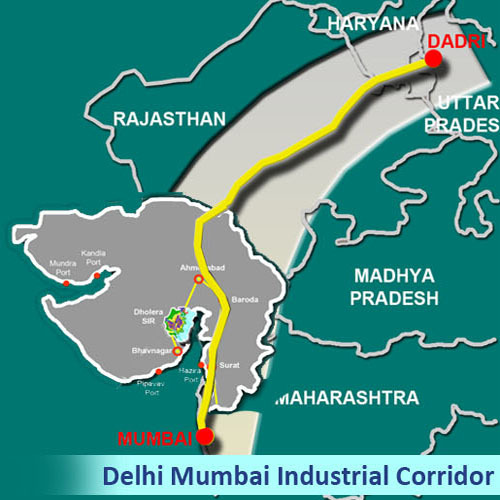
DMIC: a high impact industrial area within 150 km distance on both side of the DFC
· Area under Influence- 14% & Population- 17% of the Country
· Total Population: 173.4 Million
· Total Workers: 68.36 Million
· Total 82 Districts of Six States within the Influence Area (excluding MP)
· 25 industrial nodes have been proposed along the DMIC
The Dholera Smart City entails the development of a total of 9225 hectares of land up to 2040 and will employ an estimated 800,000 persons, housing two million inhabitants. The government aims at a self-contained and comprehensive development of the region with a balanced growth of residential, commercial, and entertainment zones.
0 notes
Text
Kutch Trip Report 2021
2800 km in 9 days that is Kutch trip 2021 for us. Started as only 4 persons while planning, it took off with 8 persons in two cars one Renault Duster and the other Honda Jazz. It was to be Noel, Commander, me and Meera Madam from the Spiti Team. But overhearing our conversation, my younger son said I will also come. Navin from Delhi opted to join, then my son said let’s go in our car. That gave us some leverage. Anandhi my wife said I will also come. Biren and Madhavi joined from Vadodara. Unfortunately, Navin could not join due to Covid. Hence, it was 8 persons in two cars. I insisted on RT-PCR due to Covid so that there should not be any hiccups when we cross the state border either way, which was agreed upon.
Everything started rolling in, a group was formed to share the ideas, places to see, etc. Few meetings took place in virtually. It was loosely decided to have a 9 day trip. Of which first 5 days were planned and booked. Rest of the bookings, it was agreed to go as it comes. The plan which was agreed upon went like this.
Kevadia, Ahmedabad, Patan, Dasada, Dhordo, Bhuj/Nakhatrana, Lakhpat, Narayan Sarovar, Mandvi, Vadodara and Dandi. Biren insisted on staying with him on last day at Vadodara.
A week before D-day, it was finalised with a halt at Kevadia, stay in outskirts of Vadodara, pass Ahmedabad to Patan, and 2 night halts at Dasada, 2 night homestay at Chobari. That was upto 1st morning. At Chobari, Ramji Meriya, the owner of Nature Zone referred us to Jugal Tiwari the owner of Centre for Desert and Ocean at Nakhatrana.
Off went we 3 from Kalyan west on 24.2.2021, picked up Meera Madam from Kalyan east in the early morning and proceeded to meet the other group at Khaman junction on the highway. Noel and Commander started from Powai and reached there.
Day-1
Kevadia
After breakfast at Hotel Ahura, went to Kevadiya via Navsari-Rajpipla and reached Statue of Unity. We reached via Kevadiya railway station road and Noel reached the other way. Parked our cars at Valley of Flowers car parking. You can walk to the nearest gate also. Plenty of buses run for visitors to reach the gate, of course free of cost at frequent interval. As we have booked the tickets online, we showed the booking in our mobile and went inside. There are two types of tickets one for the gallery and the other to go in lift upto a certain level inside the statue to see the view from above. You may require atleast 3-4 hours to see around. Evening sunset near the dam and light show on the statue after sunset are additional attractions. Then we went to Vadodara outskirts and stayed in Hotel Apple Grand. (a nice hotel on the highway)
The 182-metre (600 feet aprox.) statue is dedicated to Sardar Vallabhbhai Patel, the architect of independent India. The colossal monument towers over River Narmada and overlooks the vast surrounds and the river basin and the sprawling Sardar Sarovar dam. The Sardar Sarovar Dam is the third highest concrete dam (163 metres) in India after Bhakra (226 metres) in Himachal Pradesh and Lakhwar (192 metres) in Uttar Pradesh. A Light and Sound show using laser technology projected on the Statue of Unity takes place every evening except Monday. For further details about the Statue of Unity click here
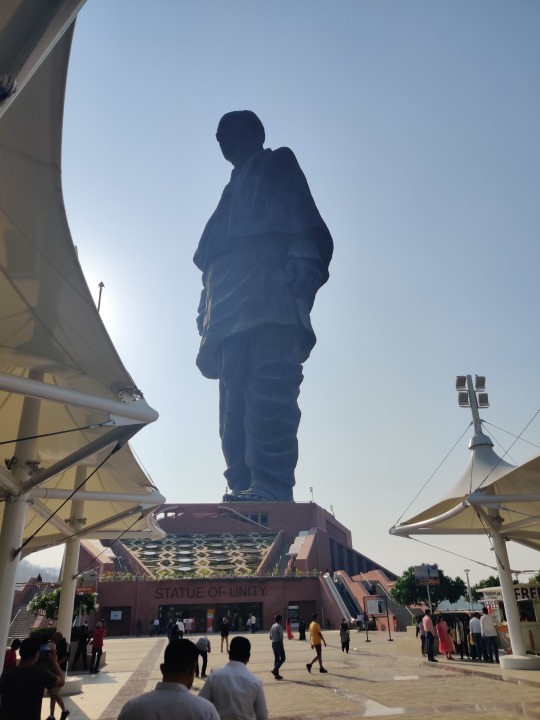
Day-2
Biren and Madhavi joined us in the morning. At breakfast, we decided to skip Sabarmati as going in Ahmedabad would delay our journey. Instead we went to Adalaj Stepwell.
Adalaj Stepwell
The flamboyant 15th-century stepwell, with intricate carvings on the pillars that support the five storeys are mostly intact; the beams work as pit stops for pigeons flying in and out and the structure still leaves jaws dropped for swarms of people. The step-well represents the Indo-Islamic fusion architecture that percolated through the many stepwells of the period. The opening in the ceilings above the landing allows light and air to enter the octagonal well, but direct sunlight never touches the steps except at noon. It is said that the temperature inside the well is six degrees cooler than outside. The stepwell has three entrances. The stairs lead to an underground storey, which has an octagonal opening on top. The walls are covered in ornamental carvings with mythological and village scenes. You can read about it more here
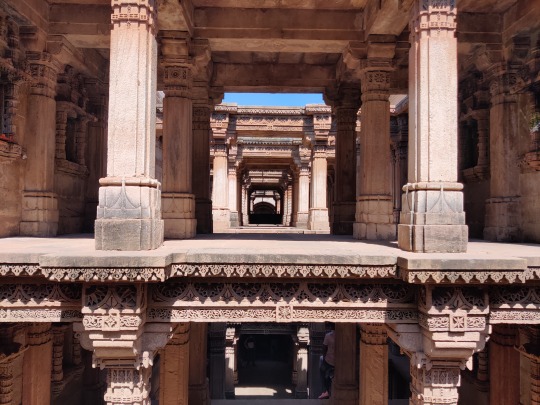
Rani-ki-vav, Patan
Next stop was Patan, the world heritage site of Rani-ki-Vav. This is one of the oldest and finest stepwells in Gujarat and is remarkably preserved. Steps lead down through multiple levels with lines of carved pillars and more than 800 sculptures, mostly on Vishnu-avatar themes, as well as striking geometric patterns. The stepwell is made in the form of an inverted temple. It showcases superior craftsmanship of the era, and the unique Maru-Gurjara architectural style. The stepwell was built in 1063 by Rani Udayamati of the Chaulukya Dynasty to commemorate her husband, Bhimdev I. The stepwell was commissioned in 1063 and was completed after 20 years. Archeologists Henry Cousens and James Burgess visited it in 1890s when it was completely buried under silt and only the shaft and few pillars were visible. The stepwell was rediscovered in 1940s, and the Archeological Survey of India restored it in 1980s. The stepwell has been listed as one of UNESCO's World Heritage Sites since 2014. Read more here
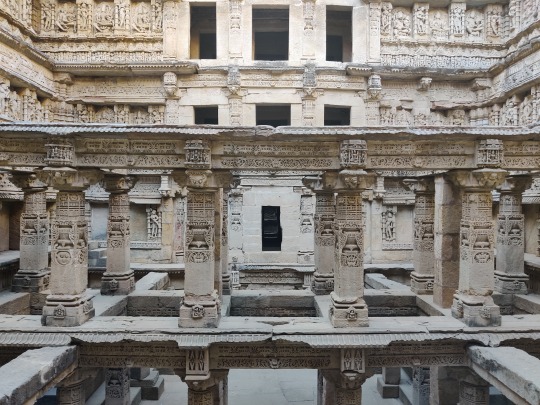
Sun Temple, Modhera
The guide we hired here told us to go to Modhera also. So we went to Modhera before the close of the site for the day. Modhera is an ideal destination for being away from the hustle-bustle of city life for a day. The unruffled peaceful landscape and the majestically welcoming temple complex will ensure to take you away from the mundane routines of daily. As you enter the historical complex, you first come across the magnificent kund known as the Ramakund, built in rectangular shape containing 108 shrines to various gods and demi-gods. There are three main shrines positioned on the three sides of the kund, dedicated to Ganesh and Vishnu and an image of Lord Shiva dancing the ‘tandav’ facing the temple of the sun which covers the fourth side. The twelve representations carved on the pillars represent the sun according to the twelve months. The statue of the sun god no longer exists. More about here

Reached Rann Riders, Dasada, Little Rann of Kutch in the night. During the night you can miss the sign board, while reaching advised to go slow so that you can take a proper turn to reach the resort. We met Cyclist Brajesh Sharma who was going live on YouTube from the Nature Zone. He is on All India Tour on cycle to create awareness about dangers of using plastic in general and single use plastic in particular. He regularly interacts with the schools, colleges on his tour which he started a year back. Follow him here
Day-3
Little Rann of Kutch
Morning after breakfast, went for the dry land safari in the Wild Ass Sanctuary and wet land safari in the evening. Being the world’s only natural habitat for wild ass, the sanctuary of course draws people to watch these magnificent creatures. However, the sanctuary harbours a large variety of bird population. The Rann was a shallow part of the Gulf of Kutch earlier. It is formed through the process of siltation of marine estuary. During monsoon, the Rann becomes a vast shallow sheet of water which dries up by October, November. Flamingos, Pelicans, Spoonbills, Glossy Ibis and Painted Storks etc were seen by us. We saw Brahminy Duck, Sandgrouse, etc. also.
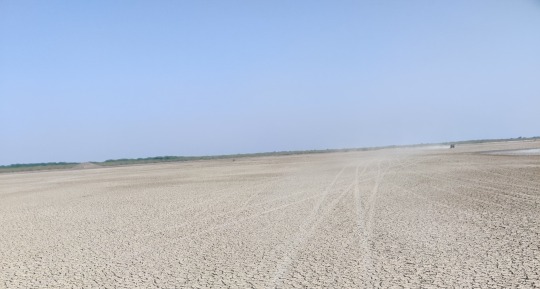
Day-4
Left for Dholavira for Harappan Excavation another UNESCO World Heritage site. This was the highlight of the trip. As all you know, every such trip has a highlight and a place worth visiting, a lifetime achievement. Dholavira was one such place. You are reminded of the advance techniques used by people more than 4500 years ago. You will not believe until you see such place. Personally, I feel what you are taught in schools about history is nothing when you visit such places and hear from government guides.
Dholavira
Dholavira is the most remarkable excavations of the Indus Valley Civilization or Harappan culture, dating back to 4500 years ago. What Dholavira offers you, in the intense environment that comes with being surrounded by the Great Rann of Kutch, is a unique insight into the pioneering Harappan mind, with one of the world’s earliest and best planned water conservation systems and what might be the world’s first signboards, written in ancient Indus script.
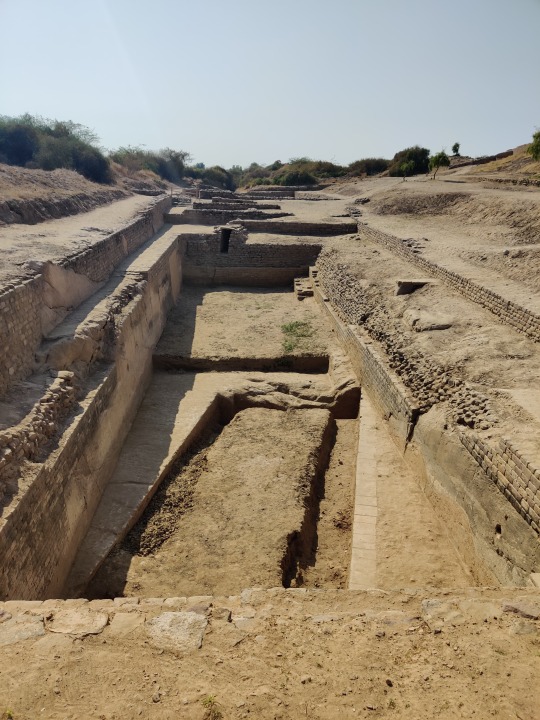
The excavation also tells the story of the 7 stages of the civilization, from development to maturity to decay, the last of which hints at a strange piece of history, with more questions than answers. After the peak of the civilization Dholavira was temporarily abandoned, after which it seems that the settlers returned with a markedly de-urbanized culture. There are hints that they willingly chose to simplify their lives, rather than try to ride the collapse of their once glorified civilization. Here, on the ruins, you will have a chance to contemplate what progress and civilization mean and what, if anything, is truly permanent.
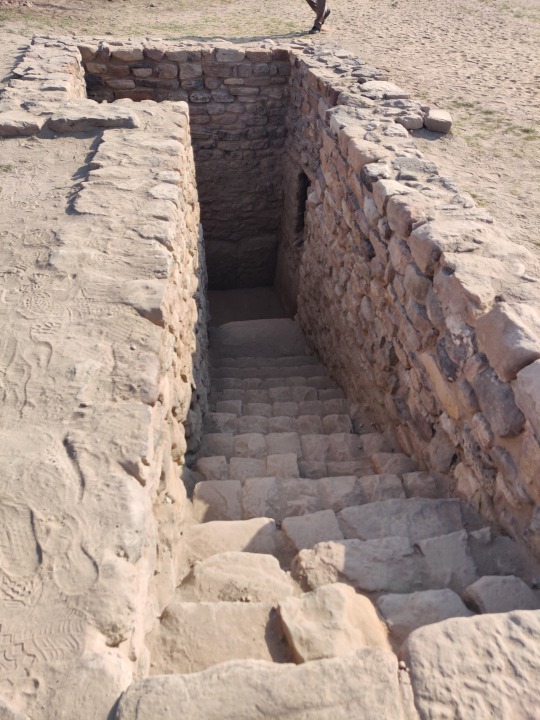
Dholavira, known locally as Kotada (large fort), sprawls over 100 hectares of semi-arid land at the north-west corner of the island of Khadir. It is one of the islands in the Great Rann of Kutch that remain above the flood-plains in months when the rest of the desert is submerged by the monsoon. Dholavira has two seasonal nallahs, or streams: Mansar in the north, and Manhar in the south. The journey to Dholavira itself is beautiful, taking you through the saline desert plains of the Great Rann, where you can spot wildlife such as chinkara, nilgai, flamingos and other bird life.
The site was unearthed by the Archeological Survey of India (ASI) in 1967, but has been systematically excavated only since 1990. It has a museum where all the artefacts are on display. Visit this website for more information.
Chobari
We started for Chobari, Nature Zone, our final stop of the day. The google map shows the wrong route at the last leg. But follow your instincts and go, as the people nearby are helpful. Ashwath drove through a village and people guided properly. When in the map it was showing the homestay is just across, I told him just take a turn instead of going ahead. Just then, I noticed a board showing the way. So, we went first, as the other car followed the google map and was helped by Ramji by sending a person to show the way. It is very difficult in the night and if you are new in these areas.
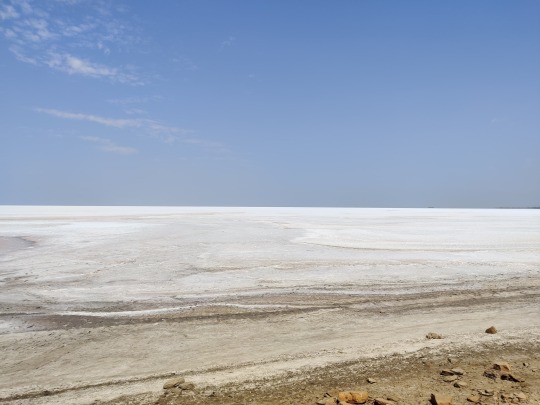
Meriya Nature Zone is a homestay and bookings can be made through personal contacts. It is yet to be on internet. The homestay is very good with basic amenities. As mobile network is available, no worries about internet connection. Ekal Rann is nearby and the full moon with Rann in background is something to be experienced. For bird lovers, the homestay itself is a heaven as Maharashtra’s state bird Yellow footed Green Pigeon, peacock, red vented bulbul, kingfisher, Domicile’s crane, etc are plenty. Just outside the homestay, there is a water body, where lot of coots, cormorants, ducks, shag, etc can be seen.
Day-5
Ekal Rann
Noel and others went for nearby bird watching where hordes of peacock, common cranes, calves feeding takes place and came back. The other group enjoyed the bird watching and village experience chitchatting under the tree in the homestay. As we have not decided about our further stay at Nakhatrana/Bhuj, Ramji Meriya suggested us Jugal Tiwari at Nakhatrana. We finalised the stay at Nakhatrana, Centre for Desert and Ocean (CEDO) for two nights. In the evening we went to Ekal Rann for sunset and full moon. We saw flamingos and cranes in thousands. The slushy road in between leads to Dholavira but only when it dries. Ramji was telling that due to excessive rains this year, it has not dried up. He also remembered his pioneering effort of bike rally from Ekal to Dholavira and back.
Day-6
Bhuj
After breakfast, we started off to Bhuj, and straight went to Aina Mahal but unfortunately, we reached around 12.30 pm. It is closed between 11.45 am and 3.00 pm. Then, Noel suggested to go to his friend’s hotel (Hotel Annapurna, near Bhid Gate). We thought of getting our RT-PCR done and enquired with Gor and Jugal Tiwari and agreed to do it in Bhuj before proceeding further to Mandvi and then to Nakhatrana. Bhagat lab, Bhuj does the RT-PCR in Bhuj.
Mandvi Beach
We then went to Mandvi beach and spent time. There must be some other point where seagull, spoon bill etc, are plenty. The beach point is very crowded with camel ride, boat ride, joy ride etc. and bustling with lot of people. We were wondering where this corona went?
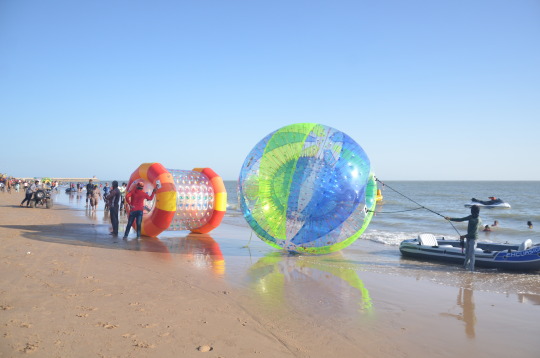
Reached Moti-Virani village, where CEDO is situated and here came to know about Jugal Tiwari is ex. BNHS person. He was also pleasantly surprised to know about us being BNHS members. The booking at CEDO is through internet only and some times through contacts known to him. In our case Ramji Meriya. No bookings on go and knock.
Day-7
Lakhpat, Narayan Sarovar
Mata-no-Madh, Ashapura Temple
After breakfast, we started for Lakhpat the fort town. On our way we stopped at the Mata-No-Madh Ashapura Temple. This shrine is steeped in antiquity as far as its origin is concerned. Today there is no trace of any ancient records or writings which give any indications of the beginning of worship at this shrine. One fact firmly stands out that this deity was very much there in 9th century AD when the Samma clan of Rajputs from Sindh first entered western, or more correctly, north-western Kutch. They were followed in the later centuries by more families or this clan which eventually established them in the region and one of their line got control of the whole state of Kutch in the beginning of the 16th century. Then we went to Siyot Caves. It is a small Buddhist cave as the name suggests. From Siyot to Lakhpat, the road after passing a village was only bushes and mud road. Though the google map shows it as Siyot-Lakhpat Road, it is a challenge to drive on this road which joins the Gaduli-Lakhpat Road at the end.
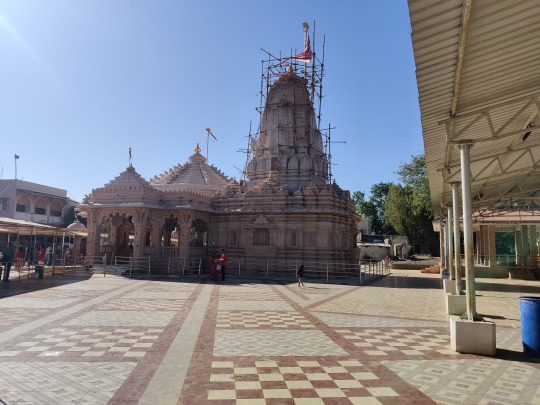
Lakhpat
Lakhpat Fort with a walled fort, was an important coastal trade node in the 18th century. At the mouth of the Kori creek, the large fort walls still offer testimony to a short but glorious past. One can climb the fort rampart, the only remaining structure of the fort, and look over at the placid sea. This spot is particularly stunning at sunset. Within the fort walls, also lies a 16th century gurdwara. It is believed that Guru Nanak stopped here twice during his second (1506–1513) and fourth (1519–1521) missionary journey called Udasis. The gurdwara is a soothing spot for travellers. The soft hymns play constantly in the background, as travellers visit the ancient Sikh place of worship to see relics like wooden footwear, palkhi (palanquin), manuscripts and markings of two important heads of Udasi sect. We had prasad at the Gurudwara Langar.
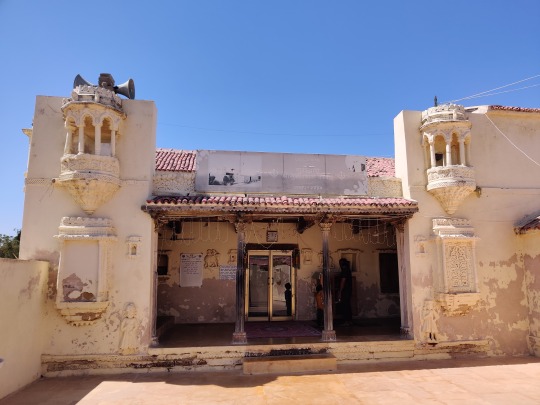
More than 200 years old, the fort is named after Rao Lakha, who ruled in Sindh about the middle of the thirteenth century. It fell to ruins through the century, as trade depleted, and the people in the town migrated to fairer pastures.
Narayan Sarovar
Narayan Sarovar Temple has great spiritual significance. This is one of the 5 holy lakes of Hinduism, along with Mansarovar in Tibet, Pampa in Karnataka, Bhuvaneshwar in Orissa and Pushkar in Rajasthan, and is considered a coveted place for a holy dip. The origin of Narayan Sarovar dates back to the Puranas. It is said that there was a drought in the region, and Lord Vishnu appeared in response to ardent prayers by sages. When he touched the land with his toe, a lake was immediately created, alleviating the locals from their misery. An adjoining temple built by the wife of Maharao Desalji features shrines of Shri Trikamraiji, Laxminarayan, Govardhannathji, Dwarkanath, Adinarayan, Ranchodraiji and Laxmiji. Madhavi was excited to know about Vallabhacharya, who had baithak at this place. She interacted with the pujari of the temple to know more about it.
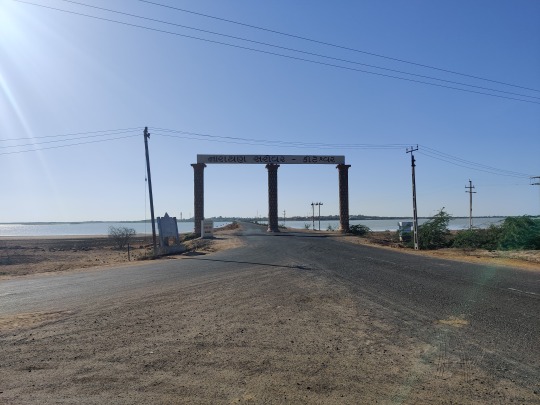
A short drive from here, the Koteshwar Mahadev Temple is a grand sandstone structure that overlooks a marshy sea. Shrines dedicated to Shiva and Ganesha are the highlights here. Koteshwar Temple, at a place where the immensity of dry land meets the incomprehensible vastness of the sea. It is the last outpost of human construction and the temple at the westernmost limit of India. The story of Koteshwar begins with Ravana, who won a boon from Lord Shiva for an outstanding display of piety. This boon was the gift of a Shiva linga of great spiritual power, but which Ravana, in his arrogant haste, accidentally dropped and it fell to earth at Koteshwar. To punish Ravana for his carelessness, the linga turned into a thousand identical copies (some versions of the story say ten thousand, some a million; suffice to say it was quite a lot.) Unable to distinguish the original, Ravana grabbed one and departed, leaving the original one here, around which Koteshwar Temple was built. Visitors can see the temple, walk along the beach and on a clear night, even see the glow of light from Karachi, Pakistan, on the north-western horizon. One more observation was that the flag is so long that it touches almost the sides. Never seen temple flag so long.
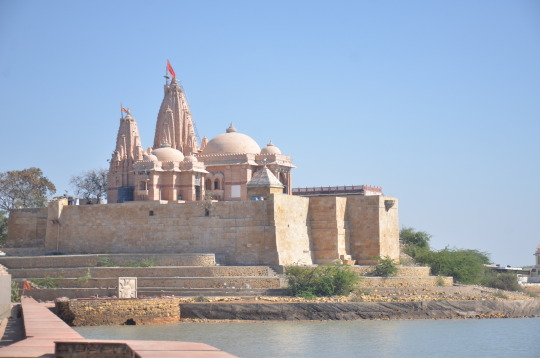
On our way back, we were looking for the tropic of cancer line which we could not find while going. To our delight, we found the board but the markings on the road is not at all visible may be due to asphalting of roads and ignorance of the contractor who laid the road.
We skipped going to Nirona village for award winning rogan artistes, bell makers, Lacquer works due to paucity of time.
Day-8
We started after our breakfast for Vadodara. Wait. Jugal Tiwari wanted to show us his fossil collections which was spellbound. He explained patiently and offered his help those students for their academic purpose. He also showed us the bell works and rogan art which he sells to guests as promotion of cultural appreciation. After exchanging pleasantries, we left for Biren’s house. The drive was a long one. We took a different route in which the road was not at all good as compared to arterial roads. Hence, we reached Vadodara at least 30-40 minutes after they reached. Noel went to his daughter in law’s place. We had a on the go Vadodara darshan in Biren’s vehicle. Meera Madam revisited her student days. We purchased some sweets and savouries for our contacts and colleagues in Mumbai. Else you will be stuck for response for it will be like Returned and had dinner at Biren’s house.
Day-9
Left early around 7 am. Biren dropped Commander and Meera at the designated spot to meet Noel. Transferred the luggages accordingly. Off we went to Dandi.
Dandi
The 'National Salt Satyagraha Memorial', Dandi, is conceived as an experiential journey recreating the spirit and the energy of the 1930 Dandi March led by Mahatma Gandhi and 80 of his fellow Satyagrahis, taking the visitors to the Monument step-by-step in order to visualize and understand the history of the historic Salt March and the methodology of Satyagraha, which finally led to India’s Independence. As Noel asked us to visit his factory at Vasai, off we went from Dandi to Vasai. We reached first and was waiting who joined after half an hour. Noel showed us his factory and his award-winning instruments. We said good-bye with lot of memories of the fascinating trip. Dropped Meera Madam at her place and returned to Kalyan west at sunset.
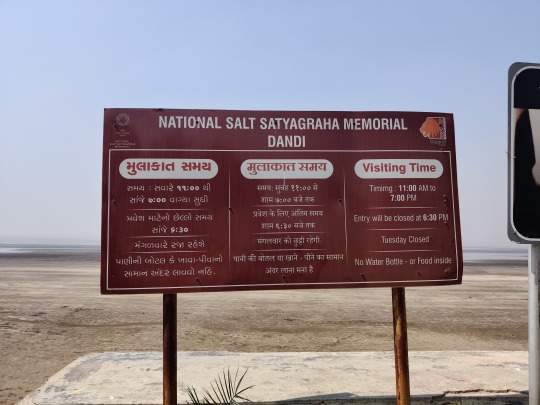
Note:
In view of Corona, we followed the safe procedure like wearing mask always when stepping out, in car, etc.
Did RT-PCR for each person for crossing the state border even though there was no check.
Thanks to Noel and Ashwath our excellent drivers. Commander for a brief change drove a portion of the trip.
--- ---
0 notes
Text
Sharp Strategist
New Post has been published on https://apzweb.com/sharp-strategist/
Sharp Strategist


Inspection round: Agrawal at a corona ward in Vadodara. Photo Nafees Khan
When the first COVID-19 case surfaced in Vadodara on March 24, collector Shalini Agrawal immediately chalked out a strategy to deal with the emergency situation. And leakproof containment emerged as an integral part of the district administration’s strategy.
On April 4, when a COVID-19 case was discovered in Ikhar village in the bordering Bharuch district, she sealed eight neighbouring villages in the district. The district administration ensured that essential items were home-delivered to the villagers. The strategy paid off as these villages have been Covid-free.
The three areas of Vadodara city which first saw positive cases, Nagarwada, Saiyadwada and Tandalja, were also sealed and designated red zones. Door-to-door screening was done, during which Agrawal also started random sampling for COVID-19 cases, the first time in Gujarat. For this, she had a mobile ambulance with a team of two doctors and two nurses accompanying the health officials. As many as 75 asymptomatic cases were discovered. They were moved to a special quarantine facility created at the Ebrahim Bawany Industrial Training Institute on the city’s outskirts. Vadodara has 500 beds for COVID-19 patients with another 500 beds are coming up by next week. There is quarantine facility of 2,500 beds with provisions being made for another 2,500. The authorities have 156 ventilators.
Agrawal has also been taking measures to support the marginalised classes during the lockdown. Around 35,000 people without ration cards in the district, mostly migrant labour, have been brought under the Gujarat Anna Brahma Yojana, so that they are eligible for free rations. She also supervised the distribution of rations to 1.2 million people who were not covered under the National Food Security Act.
Vadodara has opened 4,500 of the 9,000 big and medium industrial units in rural areas. Some 45,000 workers have reported for duty so far. Agrawal’s office has put out a fixed format online where units can apply for permission to open with an undertaking that they will adhere to all social distancing rules. Economic activity in areas under the Vadodara Municipal corporation will take time to start.
For the people of Vadodara, Agrawal’s proactive measures are no surprise. The 2005 batch IAS officer had earlier won recognition as the best district collector and best district development officer under the Gujarat government. Meanwhile, more good news, 45 COVID-19 patients who were discharged from the quarantine centre at the technical institute have said they’ll donate blood for plasma therapy to help critical patients.
Get real-time alerts and all the news on your phone with the all-new India Today app. Download from


Source link
0 notes
Text
States want longer lockdown, want clarity on movement of workers
West Bengal accused the Centre of sending mixed signals with the relaxation of some curbs, while Bihar, Jharkhand and Odisha, facing the prospect of hundreds of migrant labourers returning, asked it to specify guidelines in this regard. Most states on Monday indicated at the videoconference with Prime Minister Narendra Modi that they wanted the lockdown to continue in some form post-May 3, while adding that they would follow the Centre’s lead on the matter. West Bengal accused the Centre of sending mixed signals with the relaxation of some curbs, while Bihar, Jharkhand and Odisha, facing the prospect of hundreds of migrant labourers returning, asked it to specify guidelines in this regard. The PM, one Chief Minister said, did not respond to demands for an economic package. “The mood was in favour of continuing the lockdown with concessions,” Puducherry CM V Narayanasamy said, while telling The Indian Express that Modi praised Rajasthan CM Ashok Gehlot for his handling of the coronavirus issue. Again, Andhra Pradesh was among the few states to seek relaxation. Chief Minister Y S Jagan Mohan Reddy said that with 80% of the state a virus-free “green zone”, this may be considered. However, Jagan did not say if the state would lift restrictions after May 3. In a televised address later in the day, the CM said that with a vaccine not likely for a year, developing herd immunity was the only option.
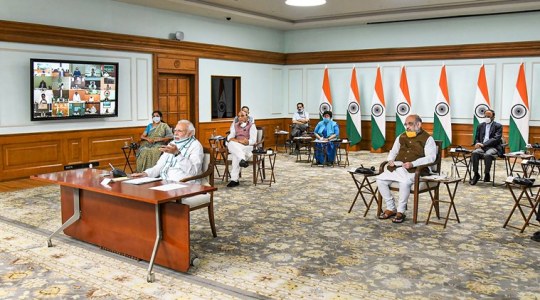
Prime Minister Narendra Modi during the interaction with Chief Ministers. (Twitter/PIB) Maharashtra, the state with the most coronavirus numbers, indicated that it could continue the lockdown. Bihar CM Nitish Kumar sought directions on the issue of its students stuck in Kota and other places, as well as on migrant labourers, while leaving a decision on extension of the lockdown to the Centre. Facing flak for not bringing back students from Kota, he said unless there was a direction from the Centre, it amounted to violation of the curbs. On whether the lockdown should go on after May 3, Nitish said, “Experts should be consulted. Bihar will abide by whatever decision the Centre takes.” It also expressed concern over people returning to the state without screening. Odisha CM Naveen Patnaik sought framing of a national SOP for movement of people stranded across the country. The state estimates that over five lakh of its workers are stranded in different parts of the country. Narayanasamy, who raised the issue of students stuck abroad, said the PM made a “passing remark” saying the migrant labour issue has to be considered, but did not offer any solution.
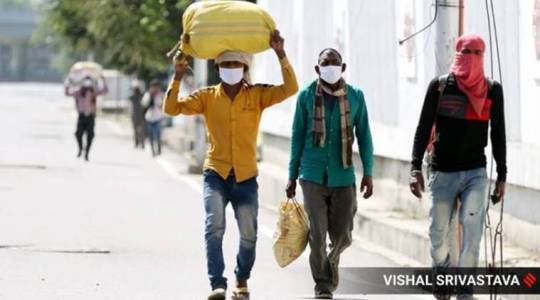
Bihar, Jharkhand and Odisha, facing the prospect of hundreds of migrant labourers returning, asked it to specify guidelines in this regard. (Express File Photo) “The Chief Ministers were unanimous in telling the PM that the way in which the coronavirus cases are increasing, there should be a cautious approach and the PM has to take a call on the basis of observations by CMs. Most of the BJP-ruled CMs said the lockdown should continue and economic activity should be slowly started,” he said. Narayanasamy said he was among the CMs who sought an economic package, as well as the states’ share of GST revenues. “The PM did not respond to that directly. He praised state governments for doing a Herculean task… He praised the Rajasthan CM for his handling of the coronavirus issue,” the CM said. According to him, the PM said, “Every state has some party in power, which realises that it has a chance to take the country forward. Hamein reform bhi karna hai. Agar reform karne ki disha mein rajya initiative leta hai, aap dekhiye yeh sankat ko hum bohot bade avsar main palat sakte hain. Main Ashok Gehlotji ko badhai dunga. Unhone kai initiative liye. Unhone labour ke liye samay seema ki bi badotri ki hai. Theek hai alochana thodi hue hogi, lekin Rajasthan ne disha dikhayi hai (We have to carry out reforms. If a state takes an initiative for reform, we can turn this crisis into a big opportunity. I want to congratulate Ashok Gehlot. He has taken many initiatives. He has increased the time limit for labourers as well. There must have some criticism, but Rajasthan has shown the way).” The Prime Minister was apparently referring to the Rajasthan government’s decision to increase working time in factories from 8 hours to 12 hours. Naryanasamy also said there should no general policy regarding opening of shops with states given the freedom to decide on this. Accusing the Centre of making contradictory statements, West Bengal CM Mamata Banerjee wanted greater clarity on the Home Ministry order regarding this. “We are in favour of the lockdown. But the Centre on one hand emphasises on this, and on other hand, issues orders to open shops. If you open shops, how will you enforce the lockdown?” Banerjee said. She added that the state would plan up to May 21. “From the Prime Minister’s speech, it was clear that this will continue for long.” Fighting a surge in numbers and a high fatality rate, Gujarat CM Vijay Rupani called for a “phased” lifting of the lockdown, “citing the interests of small and medium entrepreneurs and labourers”. He said at the video-conference that most of the deaths in the state were due to co-morbidities. Having directed opening of single-unit shops except in containment zones on Saturday, Gujarat has revoked the order for Ahmedabad, Vadodara, Rajkot and Surat. Rupani said he had received representations from shopkeepers saying they preferred staying closed till May 3, while adding that the state would go by what the Centre decides. Uttar Pradesh CM Yogi Adityanath did not give any indication of the state’s plan, even as he ordered officials on Monday to create facilities to quarantine about 10-15 lakh people. Significantly, it also arranged to bring home about 10,000 students from different districts of the state stuck in Prayagraj. Jharkhand CM Hemant Soren, however, said the state was in no position to bring back its students or labourers. “We Jharkhandis are being punished for following the Central government orders… We have been saying that we want to bring (stranded students, labourers) back. But the MHA issued orders that ban inter-state travel till May 3… Other states are flouting the orders and we have been left helpless,” Soren said at a press conference. He added that the state won’t open shops as yet, but would follow the Cente’s decision on lifting the lockdown. Haryana CM Manohar Lal Khattar urged the government to remove the uncertainty around dates of competitive examinations. Punjab sought the Centre’s permission for reopening of small shops, businesses and industries in all areas except containment zones. CM Amarinder Singh also wrote a letter to Home Minister Amit Shah, as he was not among the nine CMs to speak at the video-conference, where he mentioned the state’s financial health. Kerala CM Pinarayi Vijayan said the state had told the Centre that the lockdown can continue partially till May 15, advising “a cautious approach” on lifting restrictions. “Considering the peculiar situation in Kerala, partial lockdown can be continued until May 15. The course after May 15 can be decided reviewing the then situation,” the CM said. Tamil Nadu CM K Palaniswami sought more RT-PCR kits for the state to take testing up from 10,000 a day from 7,500. Its stand on extension of the lockdown curbs, however, was unclear. Meghalaya CM Conrad Sangma said the lockdown in the state will continue post May 3 with relaxation in non-COVID-19 districts. Meghalaya has 11 active positive cases. Sangma also suggested an “Economic Task Force” including all states to suggest solutions to initiate economic activities. “There is an economic state-to-state dependence. The establishment of an economic task force will help states,” he said. Madhya Pradesh said it would wait for the Centre’s guidelines to decide its post-May 3 plan, while Telangana CM K Chandrashekar Rao said the lockdown should be extended if necessary as it was the only weapon against the virus. (with inputs from Kolkata, Ranchi, Hyderabad, Lucknow, Ahmedabad, Chandigarh, Thiruvananthapuram, Guwahati, Bhopal, Mumbai) Read the full article
0 notes
Text
Godhra: Stones pelted at cops during sealing drive, 8 detained
Godhra: Stones pelted at cops during sealing drive, 8 detained
By: Express News Service | Vadodara | Updated: May 1, 2020 12:36:29 am


Medical officials in Vadodara’s Nagarwada after a person tested positive in the area. (Express photo: Bhupendra Rana )
Tension prevailed in Godhra town Thursday night after residents pelted stones at a police team that had come to seal a containment zone.…
View On WordPress
0 notes
Text
All About Dholera Smart City Project - Nebullus Buildcon

All information about Dholera SIR
India's First Planned SMART CITY – Dholera SIR
Dholera SIR is an India-Japanese joint activity that are proposed to assemble a - Mini-Japan Township."
Dholera SIR is a significant task under the DMIC Project with an intend to make it a worldwide assembling center bolstered by world class foundation. Dholera is first SIR inside high effect Delhi-Mumbai Industrial Corridor (DMIC)
The vision of Dolera SIR is improve personal satisfaction, update human abilities, make world class framework and pull in worldwide venture".
The Dholera SIR (Special Investment Region) will comprehensively contain different zones including private, business, budgetary, fabricating, handling, amusement and institutional and others notwithstanding the world class foundation regarding street, water, sanitation and different offices.
Dholera SIR is an India-Japanese joint activity that are proposed to fabricate a - Mini-Japan Township.
In addition the plans contains every single current comfort and astounding foundation structure with Prime most reduced Price and EMI alternative with adaptable time length.
Projects : Real Estate Projects in Dholera
Major highlights of Dholera Smart City
Dream Project of Mr. Narendra Modi imagined when he was the Chief Minister of Gujarat.
Identified as the primary Smart City of India.
To be created multiple times the size of Delhi and Multiple times that of Shanghai.
Rated by Forbes as one of its sort urban communities in India and one among Top 12 quickest developing urban areas on the planet.
A Special Investment hub along the DMIC passage making it a site for quick track exchanging and fabricating exercises.
Development plans attempted mutually by Gujarat State Government and Central Government.
Excellent network through rail, street, express expressway, worldwide air terminal, metro and port which aggregately connects the city on both national and worldwide front.
Initial subsidizing of Rs. 3,000 crore got from government which will bring about pulling in FDI's and private financial specialists.
Availability of bounteous land at lower valuation makes it an incentive for retail and worldwide financial specialists.
First decision for brilliant financial specialists attributable to its vital area, current costs and push from the administration.
By and huge, it is especially exhorted by specialists who are watching Dholera Real Estate showcases intently that putting resources into Dholera at present will unquestionably yield generally excellent returns.
High Speed Metro Rail and BRTS to interface SIR with super urban communities.
Dholera International Airport with Cargo office.
Connected with Kalpsar dam and Bharuch-Bhavnagar Ferry Service.
Sea Port in the region.
Connectivity to urban areas: Ahmedabad, Bhavnagar, Vadodara.
Partner Countries: USA, UK, Singapore, France, China, Korea and so on.
Near of Gujarat International Finance Tech (GIFT) city.
International level Smart Networking plan ICT finished by CISCO.
Major Investor-CISCO, IBM, USEL,Mitshubishi, Hitachi, Mahindra and so forth.
Sea Pipavav Port in the region - Best for working together/exchanges.
Benefit of ocean coast, nature park, fairway.
Capable to take into account both International and Domestic Market.
Close to Petr-synthetic substances and Petroleum Investment Region (PCPIR).
Reshaping of sporadic molded plot is finished in FP (Final Plot).
Check Out : Residential Plots in Dholera Smart City
DHOLERA SIR - PROJECT VISION
To create Dholera SIR as worldwide assembling and exchanging center point.
For example "The motor for financial resurgence of the nation" which is bolstered by world class framework.
UIpgrade venture atmosphere, improve personal satisfaction, update human abilities, make world class framework and draw in worldwide speculation".
Task objectives are to twofold the work potential, triple modern yield and fourfold fares from the locale in next five years.
DHOLERA SIR - LOCATION PROFILE
DHOLERA is arranged in Ahmedabad region in the Gulf of Khambhat.
Recognized as a Greenfield port, it will be created alongside private area interest by Dholera Port Limited (advanced by J K Group and Adani Group).
Dholera is in nearness with the beach front line. It is secured by water faces on three sides, to be specific, on the east face by Gulf of Khambhat, on the north side by Bavaliari stream and on southern side by Sonaria river.
To create Dholera SIR as worldwide assembling and exchanging center point for example "The motor for monetary resurgence of the nation" which is bolstered by world class framework.
Vicinity to Ahmedabad has furnished Dholera a solid limitation advantage with a dynamic assembling base and speculation situation.
The undertaking is spread over a territory of 35,000 hectares. The preparing region which is proposed is 14,000 hectares and rest is non-handling zone.
Dholera port is basically included into dealing with general payload, dry mass, compartments, transport breaking and synthetic taking care of offices.
Deliberately found, the Ahmedabad-Dholera modern district exists in 100 km from the Dedicated Freight Corridor (DFC) in Southern Gujarat.
Visit : Real Estate Company in Dholera
0 notes
Text
‘Single-use’ plastic free zone in more than half of India’s Airports

The Airports Authority of India (AAI) on Tuesday (September 3) declared 20 more airports as ‘single-use’ plastic free zone taking the total number to 55 airports, according to the Hindustan times.
With that more than half of India’s airports have become single-use plastic free zone as there are about 100 operational airports in the country, an AAI official said.
Six private airports are also working towards eliminating use of plastic and are expected to achieve it by the end of this year.
Prime Minister Narendra Modi in his 2019 Independence Day speech urged citizens to avoid using plastic bags and rid themselves of the habit of using ‘single-use’ plastic bags by October 2 this year.
“Proactively acting on the PM’s clarion call and as per the directions issued by the ministry of environment, forest and climate change to beat plastic pollution, 35 AAI Airports had been declared ‘single-use’ plastic free airport terminals in Phase I,” said a spokesperson for AAI.
Also Read: Justice for Madhav and Harsh: Social media came in support of the boys
Subsequently, 20 more airports were declared ‘single-use’ plastic free, he added.
Airports in Agartala, Ahmedabad, Amritsar, Bhopal, Goa, Guwahati, Jammu, Lucknow, Vadodara, Varanasi and Visakhapatnam were declared plastic free zone in Phase 1.
In the second phase, Allahabad, Aurangabad, Gaya, Gorakhpur, Jodhpur, Khajuraho, Leh, Silchar, Surat and Tuticorin were declared plastic free airports among others.
The AAI has undertaken various measures to eliminate the single-use plastic items at passenger terminals including banning of single-use plastic items like straws, plastic cutlery and plastic plates.
AAI is also enhancing its waste management systems and is promoting the use of eco-friendly sustainable alternatives like use of biodegradable garbage bags in bins and installation of plastic bottle crushing machine at airports.
National carrier Air India has also imposed a ban on ‘single-use’ plastic products like bags, cups and straws on all its flights from October 2, the birth anniversary of Mahatma Gandhi.
Delhi’s Indira Gandhi International Airport too has decided to do away with plastic usage by the end of 2019. Delhi airport has started the process of not using plastic as grocery bags, food packaging, bottles, straws, containers, cups and cutlery. The Bengaluru International Airport is also targeting the same.
Also Read: Priyanka Chopra Jonas to star in ‘The White Tiger’ adaptation
Single-use plastics, often referred to as disposable plastics, are commonly used in packaging and include items intended to be used only once before they are thrown away or recycled.
Private airlines like Vistara and IndiGo have also taken initiatives to reduce the use of plastic.
0 notes
Text
Gujrat Tourism - Statue of Unity
The Statue of Unity is a colossal statue of Indian statesman and independence activist Sardar Vallabhbhai Patel (1875–1950) who was the first Home minister of independent India and the chief adherent of Mahatma Gandhi during the non-violent Indian Independence movement; highly respected for his leadership in uniting the 562 princely states of India to form the single Union of India without any armed conflict. It is located in the state of Gujarat, India. It is the world's tallest statue with a height of 182 metres. It is located on a river island facing the Sardar Sarovar Dam on river Narmada in Kevadiya colony, 100 kilometres (62 mi) southeast of the city of Vadodara.
The project was first announced in 2010 and the construction of statue started in October 2013 by Larsen & Toubro, who received the contract for ₹2,989 crore (US$420 million). It was designed by Indian sculptor Ram V. Sutar, and was inaugurated by Indian Prime Minister Narendra Modi on 31 October 2018, the 143rd anniversary of Patel's birth.

History -
Narendrabhai Modi first announced the project to commemorate Sardar Vallabhbhai Patel on 7 October 2013 at a press conference to mark the beginning of his 10th year as the Chief Minister of Gujarat. At the time, the project was dubbed, "Gujarat's tribute to the nation". A special purpose vehicle named the Sardar Vallabhbhai Patel Rashtriya Ekta Trust (SVPRET) was constituted by the Government of Gujarat for executing the project.
An outreach drive named the Statue of Unity Movement was started to support the construction of the statue. It helped collect the iron needed for the statue by asking farmers to donate their used farming instruments.By 2016, total 135 metric tonnes of scrap iron had been collected and about 109 tonnes of it was used to make the foundation of the statue after processing.A marathon entitled Run For Unity was held on 15 December 2013 in Surat and in Vadodara in support of the project.

**** Design and construction ****
Design –
The statue depicts Vallabhbhai Patel, one of the most prominent leaders of the Indian independence movement, the first Deputy Prime Minister of India, and responsible for the integration of hundreds of princely states into the modern Republic of India.
The Statue of Unity is an enlarged version of this statue in the Ahmedabad International Airport.
After studying numerous statues of Patel across the country, a team of historians, artists, and academics chose to proceed with a design submitted by the Indian sculptor, Ram V. Sutar.[a] The Statue of Unity is a much larger replica of a statue of the leader installed at Ahmedabad International Airport. Commenting on the design, Ram Sutar's son, Anil Sutar explains that "the expression, posture and pose justify the dignity, confidence, iron will as well as kindness that his personal exudes. The head is up, a shawl flung from shoulders and hands are on the side as if he is set to walk". Three models of the design measuring 3 feet (0.91 m), 18 feet (5.5 m), and 30 feet (9.1 m) were initially created. Once the design of the largest model was approved, a detailed 3D-scan was produced which formed the basis for the bronze cladding cast in a foundry in China.

Patel's dhoti-clad legs and the use of sandals for footwear rendered the design thinner at the base than at the top thereby affecting its stability. This was addressed by maintaining a slenderness ratio of 16:19 rather than the customary 8:14 ratio of other tall buildings. The statue is built to withstand winds of up to 180 kilometres per hour (110 mph) and earthquakes measuring 6.5 on the Richter scale which are at a depth of 10 km and within a radius of 12 km of the statue. This is aided by the use of two 250-tonne tuned mass dampers which ensure maximum stability.
The total height of the structure is 240 m (790 ft), with a base of 58 m (190 ft) and statue of 182 m (597 ft). The height of 182 was specifically chosen to match the number of seats in the Gujarat Legislative Assembly.
Construction -
The statue under construction in January 2018
Approximate heights of various notable statues:
1. Statue of Unity 240 m (incl. 58 m base)
2. Spring Temple Buddha 153 m (incl. 25 m pedestal and 20 m throne)
3. Statue of Liberty 93 m (incl. 47 m pedestal)
4. The Motherland Calls 87 m (incl. 2 m pedestal)
5. Christ the Redeemer 38 m (incl. 8 m pedestal)
6. Michelangelo's David 5.17 m (excl. 2.5m plinth)
A consortium comprising Turner Construction, Michael Graves and Associates and the Meinhardt Group supervised the project. It took 56 months to complete – 15 months for planning, 40 months for construction and two months for handing over by the consortium. The total cost of the project was estimated to be about ₹2,063 crore (equivalent to ₹25 billion or US$360 million in 2018) by the government. The tender bids for the first phase were invited in October 2013 and were closed in November 2013.
Narendra Modi, then serving as Chief Minister of Gujarat, laid the statue's foundation stone on 31 October 2013, the 138th anniversary of Patel's birth.
Indian infrastructure company Larsen & Toubro won the contract on 27 October 2014 for its lowest bid of ₹2,989 crore (equivalent to ₹36 billion or US$520 million in 2018) for the design, construction and maintenance. They commenced the construction on 31 October 2014. In the first phase of the project, ₹1,347 crore were for the main statue, ₹235 crore for the exhibition hall and convention centre, ₹83 crore for the bridge connecting the memorial to the mainland and ₹657 crore for the maintenance of the structure for 15 years after its completion.The Sadhu Bet hillock was flattened from 70 to 55 metres to lay the foundation.
L&T employed over 3000 workers and 250 engineers in the statue's construction. The core of the statue utilised 210,000 cubic metres (7,400,000 cu ft) of cement concrete, 6500 tonnes of structural steel, and 18500 tonnes of reinforced steel. The outer façade is made up of 1700 tonnes of bronze plates and 1850 tonnes of bronze cladding which in turn comprise 565 macro and 6000 micro panels. The bronze panels were cast in Jiangxi Tongqing Metal Handicrafts Co. Ltd (the TQ Art foundry) in China as suitable facilities were unavailable in India. The bronze panels were transported over sea and then by road to the workshop near the construction site where they were assembled.

Local tribals belonging to the Tadvi tribe opposed land acquisition for the development of tourism infrastructure around the statue.They have been offered cash and land compensation, and have been provided jobs. People of Kevadia, Kothi, Waghodia, Limbdi, Navagam, and Gora villages opposed the construction of the statue and demanded the restitution of the land rights over 375 hectares (927 acres) of land acquired earlier for the dam as well as the formation of new Garudeshwar subdistrict. They also opposed the formation of Kevadia Area Development Authority (KADA) and the construction of Garudeshwar weir-cum-causeway project. The government of Gujarat accepted their demands.
Construction of the monument was completed in mid-October 2018; and the inaugural ceremony was held on 31 October 2018, presided over by Prime Minister Narendra Modi. The statue has been described as a tribute to Indian engineering skills.
Features -
Prime Minister Narendra Modi in the museum within the complex.
The Statue of Unity is the world's tallest statue at 182 metres (597 ft). It rises 54 metres (177 ft) higher than the previous record holder, the Spring Temple Buddha in China's Henan province.The previous tallest statue in India was the 41 m (135 ft) statue of Hanuman at the Paritala Anjaneya Temple near Vijayawada in the state of Andhra Pradesh. The statue can be seen within a 7 km (4.3 mi) radius.
The monument is constructed on a river island named Sadhu Bet, 3.2 km (2.0 mi) away from and facing the Narmada Dam downstream.The statue and its surroundings occupy more than 2 hectares (4.9 acres),[citation needed] and are surrounded by a 12 km (7.5 mi) long artificial lake formed by the Garudeshwar weir downstream on the Narmada river.

The statue is divided into five zones of which only three are accessible to the public. From its base to the level of Patel's shins is the first zone which has three levels and includes an exhibition area, mezzanine and roof. Zone 1 contains a memorial garden and a museum. The second zone reaches up to Patel's thighs, while the third extends up to the viewing gallery at 153 metres. Zone 4 is the maintenance area while the final zone comprises the head and shoulders of the statue.
Tourism -
Over 128,000 tourists visited it in 11 days since it was opened to the public on 1 November 2018. The statue was visited by over 1.5 million visitors in five months and is expected to generate around 15,000 direct jobs in tourism and allied sectors for tribal people every year.
0 notes
Text
Sofa and Carpet Cleaning | Electrician Services | Plumbing Services | House Cleaning Services In Vadodara
Sometimes a person has all the answers of his big queries but can’t tackle little things. Have you experience ever that little troubles made you unreturned? Some trouble about leaking pipes or some electric problems which are needed to be handled out fast and a person because of lack of time or lack of information about respective expert couldn’t manage such things easily as well as timely.
Now-a-days no one has time to handle these things one by one. So as an answer to these pestering conditions several agencies offer multidisciplinary facility services. These services are not limited to residential zone but also extended to commercial, apartments, schools, hotels, malls and major business sectors. Electrician Services in Vadodara is also a reliable service for your entire electricity dilemma.
The service provider offer exclusive services for property management and complete facility for tasks like plumbing, grocery home delivery, sofa and carpet cleaning, security services, housekeeping labour contract, electrician drainage cleaning, car wash, pest control, taxi service, fabrication, car wash, fabrication and many more services. Plumbing Services in Vadodara provides economic and satisfactory plumbing solution in city.
It sound quite good that a phone call relieve you from the worry of all these trouble which altogether seems moderately seems difficult.
Big centers in Gujarat contain such kinds of facility. Service provider offers reasonable services for Sofa and Carpet Cleaning In Vadodara. They have trained personnel to carry out task with scientific approach.
House Cleaning Services in Vadodara offers wide range of house cleaning operations. They study the place where the work has to be done. They apply internationally accepted norms in planning the work. They plan the work and entire work carried out as per predefined plan.
The entire procedure is smartly monitored by expert supervisors. They always work with positive manner as per the need of client and grab client’s satisfaction.
Moreover company works with focus on several quality measures like worker productivity and maintenance cost. The quality control measures are decided after client review meetings and site evaluation.
Other services includes water tanks cleaning services, grocery home delivery, taxi services, pest control, car wash and many more.
Urbane Facility Services is vadodara based company providing an exclusive trouble shooting services for commercial and corporate sectors and manufacturing and industrial sectors.
http://www.urbaneservices.in/
2 notes
·
View notes
Text
Spike in COVID-19 cases due to aggressive testing, our health teams visiting every nook and corner, says Gujarat CM Vijay Rupani
Gujarat was one of the last states in India to record its first coronavirus infection, in the month of March, but earned the dubious distinction of recording the highest single-day fatality due to the virus — 49 — on Tuesday. The positive cases now stand at 6,245, with 368 deaths.
To add to the woes, scores of migrant workers came out on the streets on Tuesday in the state’s commercial hubs — Ahmedabad and Surat — following rumours about bus services to Uttar Pradesh and Bihar.
As the infections and fatalities spike up in the state, Gujarat chief minister Vijay Rupani, in an exclusive interview with Firstpost talked about his administrative preparedness in dealing with the advancing pandemic, use of plasma therapy, third phase of lockdown, the migrant labourer-crisis, restarting economic activities in the state and more. Edited excerpts follow:
What’s Gujarat government’s approach towards lockdown 3.0?
We have adopted a two-pronged approach. First, to ensure the safety and health of our citizens, for which we identified the hotspots and areas with fewer cases. Hotspot areas were sealed and the movement was restricted under the cluster containment strategy.
The second approach ensures sufficient availability of essential goods and services in the state. We’ve not let this lockdown affect our supplies of food grains, fruit, vegetables, milk, medicines and other medical supplies, and these are available in sufficient quantities across the state.
Through a strong supply-chain mechanism, we have ensured that the shelves of shop-owners have enough supplies and people are able to access them. While the citizens of Gujarat are cooperating, our police personnel are on the alert to maintain law and order and enforce the lockdown strictly. On the other hand, our lead COVID warriors — doctors, medical staff and police — are fiercely protecting the infected people.
We’re going very strict with red zones and continue to maintain lockdown in hotspot districts of Ahmedabad, Surat, Vadodara, Rajkot, Bhavnagar and Gandhinagar. However, following MHA (Ministry of Home Affairs) guidelines, certain relaxation has been given to small businesses and standalone shops in red, orange and green zones.
Botad, Bopal, Khambhat, Bareja, Godhra and Umreth, which fall in the red zone, have not been provided with any other liberties except those related to essential items.
Click here for Coronavirus Outbreak LIVE Updates
Jamnagar and Junagadh Municipal Corporations, and 156 other municipalities will be provided necessary permissions to restart industries and units in accordance with the Centre’s guidelines. Relaxation in the green zone will be as per the MHA guidelines, keeping social distancing and safety in mind. No movement of any kind shall be allowed from 7 pm to 7 am in any of the zones in Gujarat. Licensed liquor shops and tobacco shops shall remain closed in all the zones across the state in order to prevent crowding of people.
This is a critical scenario, and we are being cautious in giving any kind of further relaxation, over and above the permissions given to industrial units and businesses.
Gujarat had very few COVID-19 positive cases and fatalities initially. The first case was reported on 19 March, almost one-and-half months after India’s first case. How did it become the second state after Maharashtra in the number of cases (6,245 so far) so rapidly? And why does Ahmedabad account for the bulk of infections and deaths in Gujarat?
Right, the first case was registered on 19 March, but the government had already started taking preventive measure since early March, keeping in mind the inflow of travellers in Gujarat throughout the year.
As a pre-emptive measure, we started thermal screening at our airports and any traveller returning from a COVID-19 affected country was closely monitored. Around 30,000 people were home quarantined after being screened. Suspected cases were examined and only a few were found positive. This is the primary reason why Gujarat did not witness a sudden spike in COVID-19 cases immediately after the first case was reported.
The increase in the number of cases started happening post the Tablighi Jamat incident. As soon as we got to know about the infected people entering Gujarat, we started identifying them but by then, they had already come in contact with their friends and family in large numbers. In fact, a majority of the cases from Ahmedabad are from residential areas of the people, who had attended the Markaz event in Delhi.
At present, the spike in cases is because of the aggressive testing strategy. Our health department teams are going to every nook and corner, be it hotspot areas or infected areas of all the districts, to conduct these tests. Hence, the number is proportionate to the density of the population in each of these areas.
Surat also has emerged as a major hotspot...
Surat is now under control and 20 to 25 cases per day are being reported. Besides the factor that triggered infection in Ahmedabad, there is the Rana community in a locality called Maan Darwaja in Surat, among whom coronavirus got spread and led to the spike in numbers there.
What steps has your government taken to contain the fast spread of Coronavirus in the state?
We were almost the last state to see the first case for the virus, but the precautionary measures had been implemented when we got to know that this deadly virus had entered India.
Once we had our first case reported, we formed a core committee and discussed the strategy in detail with a conclusion to start our next step that was the identification of the potential cases through testing and their subsequent treatment and cure of the infection. At present, we are conducting more than 3,000 tests per day, and our test per million capacity is also increasing gradually.
For example, we put 750 teams of health officials for seven consecutive days in the hotspot areas of Ahmedabad and a team of 666 health officials in Surat for three days to conduct door-to-door tests and awareness drive in the hotspot areas.
Once the patients are tested and identified, we take them to the dedicated COVID-19 hospitals. We were the first state to open COVID-19 hospitals with a capacity of 2,200 beds (altogether) in four major cities in March itself. At present, Gujarat has 61 COVID-19 hospitals, including 31 private hospitals, with a capacity of 10,500 beds with 1,500 ICU beds and 1,500 ventilators. Treatment expenses are borne by the state and soon, we will expand the capacity to 22,500 beds, including 10,000 beds in COVID-19 Care Centres.
We are using drones to monitor the situation and anyone found violating the rules is punished. The use of a drone has further helped us in controlling the movement of people while giving real-time updates.
Despite having such an advanced system of micro-level tracking and monitoring every sector through your pet project — CM Dash Board, what’s the reason behind this sudden spike in COVID-19 cases?
Let me describe the mechanism behind the CM dashboard. The tool works on the input of thousands of data points, which are collected and processed at the level of districts and the departments. However, pandemic requires people’s cooperation and support. The spike happened because there were cases of Tablighi Jamaat members hiding their travel history. While on one side, we are aggressively testing in the infected areas, on another side, we also have helpline numbers for inquiries related to COVID-19 and for online consultations for people who have symptoms or even a doubt of the infection.
At the same time, the CM dashboard has been of utmost importance during this lockdown period. I have been conducting all administrative tasks and meetings using CM dashboard during this lockdown. Through this platform, I’m regularly in touch with the Corona warriors, who are working on the front line, like doctors, medical staff and police, and with district collectors, on the status of infection in each district.
What has the government done for migrant labourers and workforce stranded in the state?
The lockdown across the country was imposed at short notice, and the movement of people was restricted. Though the lockdown has caused inconvenience to the people, we all know it is for everybody’s welfare. As Surat is one of the fastest-growing cities in India, it has a large number of migrant workers from across the country. The government had communicated to the district administration, municipal corporations, business houses and social organisations to take care of all the people who were not from our state and to provide them with all necessary help.
I am proud of our local administration which has made special arrangements for more than 1.25 lakh labourers in Surat. We have distributed free rice, pulses, sugar and salt to these labourers, under our state’s scheme Anna Brahma Yojana meant for the poor, deprived, and helpless sections of the society. We’ve also covered those migrant workers who don’t have ration cards. Till now more than three crore food packets have been distributed to the people in need, including poor.
Very recently, we have also made provisions for the workers to return to their home states in case they want to. However, now with the opening up of industries and labourers getting work and wages, I hope the movement will be less.
Your government has roped in teachers of government-run primary schools to trace migrant workers and provide them with free ration. How far has this move been successful?
As part of the government machinery, the teachers are also rendering their services. This has been very successful as with the help of teachers acting as volunteers we could reach more people in a short span of time. This step ensured that no one in Gujarat sleeps hungry during this tough time. We all are in this together.
What are your plans to restart economic activities without inviting the risk of spreading COVID-19 and how would you manage social distancing at work? Are enough masks and protective gear available for the industrial workers?
After the Centre announced certain relaxation in the lockdown rules post 20 April, the core committee came up with a plan to ease the lockdown in a phased manner. We decided to grant permission to all those industrial units and businesses falling outside the limits of municipalities and municipal corporations and containment zones. We also provided the freedom to labourers to work for a 12-hour shift with additional remuneration for extra hours. The export units outside the containment zone with prior export orders were also granted permission to operate. Based on the MHA guidelines, industrial units are expected to follow certain Standard Operating Procedures to ensure safe and hygienic atmosphere at the workplace. The norms of social distancing are also being followed stringently.
As the number of cases was gradually rising in the country, we held meetings with the key manufacturers of medical supplies and pharmaceuticals in the state. We asked them to increase their productivity and ensure uninterrupted supplies. The government is regularly procuring these items, including N95 masks, PPE kits and protection gear, after checking the product quality. We’re also manufacturing Hydroxychloroquine medicine and we are comfortable with our stock. Gujarat is the first state to manufacture ventilators locally. After successful testing, we have placed an order of 1,000 units of the ventilator with a Rajkot-based firm.
Apart from this, after the Centre’s decision to relax the lockdown rules, we have till now opened around 40,000 industrial units where more than 5 lakh workers are back at work. At the same time, more than 30,000 people are working at private construction sites.
Are Gujarat hospitals going for plasma therapy to treat COVID-19 patients?
We’ve asked the Centre and ICMR to guide us on this. In Gujarat, this therapy has been tested on a patient and ICMR is also conducting experiments. If they succeed and we get a nod from them, we’ll implement it in our hospitals.
Recently, former Congress president Rahul Gandhi urged your government to relocate 6,000 fishermen from Andhra Pradesh who had got stranded along the Gujarat coast and were facing poor hygiene and sanitation facilities...
We’ve sent all of them back home safely. In fact, the Andhra Pradesh government delayed it for a week, otherwise, these fishermen would have reached home earlier.
Will you open up one of your major tourist destinations – Statue of Unity and the adjoining 18 tourist spots—that record more than 30,000 footfalls on weekends, once the lockdown is over?
The lockdown shall be lifted in a measured and phased manner. Our first priority is to safeguard lives and livelihood. Tourists destinations, places of mass gatherings etc. shall be opened at an appropriate time and we are not in a hurry to open them without weighing all the options.
via Blogger https://ift.tt/2YFdkzG
0 notes
Text
Covid-19: States ease lockdown in unaffected areas; curbs continue in hotspots
New Post has been published on https://apzweb.com/covid-19-states-ease-lockdown-in-unaffected-areas-curbs-continue-in-hotspots/
Covid-19: States ease lockdown in unaffected areas; curbs continue in hotspots
States have begun easing the lockdown implemented following the Covid-19 pandemic. Gujarat allowed almost 4,000 industrial units to resume ops, while Bihar, UP, MP and Rajasthan focused on employing labourers in rural areas by beginning road construction and anti-flood measures. ET takes a look:
Maharashtra Industrial activity have been allowed in orange and green zones. Export-oriented units, units in industrial townships like the Maharashtra Industrial Development Corporation and SEZs in non-containment areas have been allowed to function after disinfecting work areas. The state has directed that employees be provided transportation and accommodation near work units. Workers will have to undergo screening and shifts will be phased out. Cable services, DTH and call centres can resume work in non-containment zones in Mumbai with minimum staff. Take-away services at restaurants have been allowed. Construction activities can resume if workers are accommodated at site or nearby. No industrial activity permitted in Mumbai.
Gujarat State government offices and 4,000 industrial units outside hotspots allowed to begin operations from Monday. 700 industries in Ahmedabad, 600 in Rajkot, 450 in Bharuch, 150 in Surat, 750 in Kutch, 400 in Junagarh, 200 in Vadodara and 400 industries in Morbi allowed to start operations. They have been told to ensure staggered entry and exit of workers, use thermal guns and follow proper sanitisation norms.
Uttar Pradesh The lockdown will continue in 19 districts which reported 10 or more cases. DMs of Lucknow, Agra, Noida, Kanpur, Ghaziabad, Bulandhshahar and Basti have issued notifications that lockdown will continue. In Agra, online delivery services like Zomato and Swiggy were suspended. All secretaries and section officers of state secretariat have been allowed to attend office. Courts will remain closed till April 27. Noida DM said no new industrial unit will be reopened and construction will be suspended till May 3. Work has resumed on five of the eight zones of Purvanchal, Bundelkhand and Gorakhpur expressways. The remaining will resume work on Tuesday, principal secretary Alok Kumar told ET.
Kerala Kerala has relaxed restrictions in seven of its 14 districts but after MHA raised objections, restrictions in sectors such as hair salons and restaurants were re-imposed. In districts falling in orange or green zones, the state has allowed functioning of government offices, financial institutions, pharmacies, horticulture and plantation activities, farm produce sale and construction. After the home secretary’s letter, the state reintroduced curbs on short-distance bus travel and functioning of MSMEs in municipal limits too.
Bihar Renovation of ponds under schemes like MGNREGA and ‘Jal Jivan Hariyali’ resumed on Monday. Work related to schemes such as ‘Har Ghar Nal ka Jal’ (potable water to every household), construction of roads, drainage and toilets too have restarted. The water resources department will take up works like anti-erosion in flood-prone areas. Group A and B category officers have been asked to attend offices. Eateries on highways, motor garages and repair shops can also open.
Telangana Lockdown extended till May 7. CM Chandrasekhar Rao said no relaxations will be given to any religious congregation. All online food delivery services like Swiggy and Zomato are banned till May 7. There will be no aviation services till May 7. Andhra Pradesh The Andhra government formulates guidelines to enable essential industries in manufacturing and services to resume operations. Those who reopen will have to map employees, their logistics, dormitories and rest rooms. Social distancing, health, sanitation have to be in place too.
Assam, Nagaland, Tripura The Assam government has ordered partial resumption of different departments from Tuesday. The divisional commissioners, deputy commissioners and sub-divisional officers will have to ensure that maximum 33% of employees in grades ll, lll & lV attend offices. Tea gardens have reopened. Nagaland chief secretary Temjen Toy told ET: “Government offices will start functioning from April 21 with skeletal staff.” Tripura has allowed manufacturing of pesticides, fertilisers and seeds, operation of tea, coffee and rubber plantations with 50% workers.
Jammu & Kashmir A few industrial units were allowed with minimal force. There will be no relaxation till May 3 as Covid-19 have been reported from all 10 districts of Kashmir and five of the 10 districts of Jammu. “We may allow some agricultural activity in rural areas,” Kashmir divisional commissioner PK Pole said. “Only agro-based industry, including cold storages, seed business, fertiliser and juice units in rural areas and industrial estates, would be allowed to function.”
Madhya Pradesh In rural areas, work under MGNREGA has started, especially in Bundelkhand and tribal areas. Minor construction has started in some districts. The PWD department has held meetings to resume repairing of around 150 bridges. In 26 districts, several government offices opened with limited staff.
Rajasthan MGNREGA saw increased participation from people in rural areas. Government offices were opened in several districts outside the red zone. Mining and construction work have started. Quarrying of limestone and other industrial raw material began in Jodhpur, Udaipur and other industrial zones. The supply of raw material for ceramic industry started from Monday.
Karnataka A Sunday night order from the state government halted plans to reopen IT/BT companies, manufacturing units and real estate activities from Monday.
Tamil Nadu Lockdown continues. Officials said Chennai Corporation has permitted 650 commercial establishments to deliver essential services. “About 5,000 employees from 650 companies have been given passes that will work till May 3,” an official said. Additionally, 500 sub-registrar offices began functioning from Monday.
if(geolocation && geolocation != 5 && (typeof skip == 'undefined' || typeof skip.fbevents == 'undefined')) !function(f,b,e,v,n,t,s) if(f.fbq)return;n=f.fbq=function()n.callMethod? n.callMethod.apply(n,arguments):n.queue.push(arguments); if(!f._fbq)f._fbq=n;n.push=n;n.loaded=!0;n.version='2.0'; n.queue=[];t=b.createElement(e);t.async=!0; t.src=v;s=b.getElementsByTagName(e)[0]; s.parentNode.insertBefore(t,s)(window, document,'script', 'https://connect.facebook.net/en_US/fbevents.js'); fbq('init', '338698809636220'); fbq('track', 'PageView');
Source link
0 notes
Text
Policemen in high-risk zone arrange for food, get drains cleaned
For the past 23 days, ever since Nagarwada was declared a red zone to contain the spread of coronavirus, Jadeja has been answering relentless calls, not related to crime, but over issues like delay in the arrival of vegetable vendors, cleanliness workers or need of medicines, food items. For the less than thirty minutes that the in-charge inspector of Karelibaug police station stood outside his office as the entire premise is being sanitized, his phone kept ringing. Even as messages and calls kept coming from unknown numbers, he takes them all. Despite a helpline number being provided, for the residents of Nagarwada, Vadodara’s only existing red zone, Inspector RA Jadeja is their go-to man. For the past 23 days, ever since Nagarwada was declared a red zone to contain the spread of coronavirus, Jadeja has been answering relentless calls, not related to crime, but over issues like delay in the arrival of vegetable vendors, cleanliness workers or need of medicines, food items. “I receive at least 15-20 calls a day. Most of them are about food and medicines. But we have also received complaints regarding overflowing drainage multiple times which we resolved with the help of the Vadodara Municipal Corporation. With the ongoing month of Ramzan, people also demand ice because many households do not have fridge and the temperatures are soaring, so we have been providing that too,” Jadeja says. The area housing 700 households with a population of almost 5,000 — over 90 per cent of which are Muslims – now wears a deserted look. As the aggressive imposition of containment protocols continue in the area, which has so far reported 180 COVID-19 positive cases, the deserted localities are occupied by a team of 140 police personnel on patrolling and manning 11 entry and exit points in the sweltering heat. For many of those policemen, like Jadeja, meal hours have been erratic over the weeks. The inspector says he has not had a proper meal with his family in the last three weeks. He now occupies an apartment next to his own, to maintain physical distance from his family. On days when he returns late, his wife keeps his food in the apartment. He returns to duty even before his children wake up. His interaction is only limited to looking at his family — his wife, eight-year-old son and five-month-old daughter — through the door as his son enquires about his well-being. “I haven’t hugged my kids for 23 days. It is for their good, I know. But at times I feel helpless,” Jadeja says. For most of the policemen deployed in the red zone area, their families are unaware that they are working in one of the riskiest areas of the city. Constable Mukesh Chaudhari, who has been closely working with the health department and guarding them while taking samples, says, “My family in Banaskantha are unaware that I am working in Nagarwada. I have elderly parents and they will get worried. So I downplay what we do here.” Mukesh says initially it was a bit scary for them too despite wearing PPE suit. “But this is part of our job,” he adds. Mukesh along with two other constables working with the health department are led by sub-inspector KU Chaudhary. Chaudhary leaves for work at 7 am. As he enters the red zone area, he puts on the PPE suit over his uniform. As the day advances, the double layer of uniform and PPE kit becomes unbearable under the scorching sun. The day for him ends anywhere between 10 pm and 2 am. As he leaves the red zone area, Chaudhary carefully packs his PPE suit, reaches his quarters and washes his suit and uniform in warm water. Every police official in this zone has been provided with two sets of PPE kits. “The first five days were the most hectic when I didn’t even sleep. Around 300 people were tested for COVID-19 as a part of the first mass sampling. Thereafter we would get lists of people who tested positive to take them to the hospital. The biggest challenge was to identify them. At times they would provide incomplete names or incorrect addresses. Another challenge was to convince asymptomatic patients when they test positive. We would spend hours convincing them why they should be going to the hospital. We have even roped in community leaders for help,” says Chaudhary. He has not met his wife, two daughters and son who live in his native village in Banaskantha for two months. “Every time my wife calls, she just asks me to take care. My daughters ask me when will I meet them and I have no answer to give,” he says. Support The Wrosper to get the latest updates! Stay tuned. Read the full article
0 notes
Text
No new Covid-19 cases reported, Vadodara’s Tandalja area removed from red zone
No new Covid-19 cases reported, Vadodara’s Tandalja area removed from red zone
By: Express News Service | Vadodara | Published: April 25, 2020 10:19:34 pm


A road in Vadodara is being painted with message urging people to stay home.
The Vadodara administration on Saturday removed the Tandalja area from the list of red containment zones, easing movement in the area that has been put under cluster quarantine…
View On WordPress
#gujarat cronavirus cases#tandalja news indian express#vadodara coronavirus cases#vadodara covid 19#vadodara red zones
0 notes